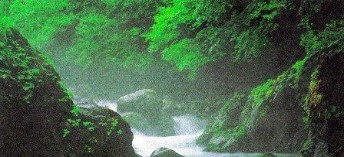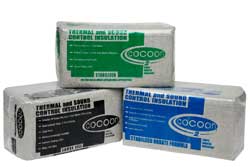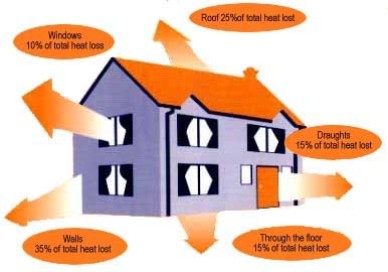Thermal Performance
Product Specifications:
R-value means thermal resistance to heat flow. The higher the R-value, the greater resistance to heat loss or gain. GreenFiber™ Cocoon9 Insulation's thermal resistance, tested in accordance with ASTM C739, measures 3.7 R-value per inch at 4" thickness, tested at 1.6pcf density. The density of this natural fiber insulation provides more consistent R-value even under extreme conditions*

GreenFiber Cocoon Insulation may be used in walls and attics, and between floors of residential or commercial structures, as well as in cathedral or flat ceilings and framed basement walls above grade. It provides effective resistance to heat flow for thermal applications, noise control for acoustical treatments, plus fire resistance and fire blocking (under the Family of International Codes as published by the ICC, International Code Council. Refer to ICC ESR-1996.) Non-standard or unusual wall configurations (i.e., other than 2x4 and 2x6 walls) can affect thermal and sound properties and require special installation considerations. These types of designs should be reviewed and, if necessary, tested prior to plan review. For non-standard walls, contact a GreenFiber technical service representative for assistance.
All GreenFiber Cocoon Insulation sold in the

GreenFiber Cocoon Insulation completely fills gaps and voids around irregular objects such as wiring, plumbing and framing materials in attics and walls.
REDUCED AIR LEAKAGE
Is two to three times more dense so it
effectively, blocks air better than
lightweight fiber glass batts.
Completely fills cavities, eliminating
voids and gaps, which are common
with batt installations that can lead to
convective heat loss.

Numerous university studies have favorably compared the performance of cellulose insulation to fiber glass. In 1990, the University of Colorado-Denver compared cellulose and fiber glass batt insulation in identical structures during the winter heating season. They found that the house insulated with cellulose insulation was 38% tighter and required 26% less energy.
Likewise, a
Decreased Convective Heat Loss
Convection is the transfer of heat by means of air current. Natural convection results as air warms, becomes less dense and rises. Cooler air replaces this air. Then this air warms and the process continues, thereby forming a convection current.

Studies by the U.S. Department of Energy's Office of Building Technologies at the Oak Ridge National Laboratory confirmed that natural convection occurs within loose-fill fiber glass. The fiberglass specimens tested "revealed that as the temperature differential increased, apparent conductive resistance (R-value) of the insulation decreased by as much as half the estimated nominal thermal resistance of the insulation. Loose-fill cellulose, initial testing indicates, allows no such convective patterns to develop. R-values increased as the temperature difference across the cellulose increased - the opposite effect that the fiber glass exhibited. The researchers concluded that the cellulose tested did not allow convective losses as the fiber glass had."
An article dated October 1991 in Energy Design Update included information on tests performed at the
Lifetime Warranty
See the complete terms and conditions of this warranty in GreenFiber's written Limited Lifetime Warranty. http://www.greenfiber.com/images/technicaldocuments/1013200922606AMPM-6.3-21.pdf

GreenFiber warrants that the product will, at the initial date of purchase, meet the requirements of the Amended CPSC Standard (16CFR Part 1209), ASTM C739 and has building code acceptance by the Family of International Codes as published by ICC. GreenFiber Cocoon Insulation has a Class I/A rating for flame spread when tested in accordance with ASTM E84. GreenFiber further warrants that the product will, for the lifetime of the structure (a) be free from defects; (b) will not deteriorate under normal and proper use including the chemical fire retardant treatment if the insulation is installed according to GreenFiber's instructions.
